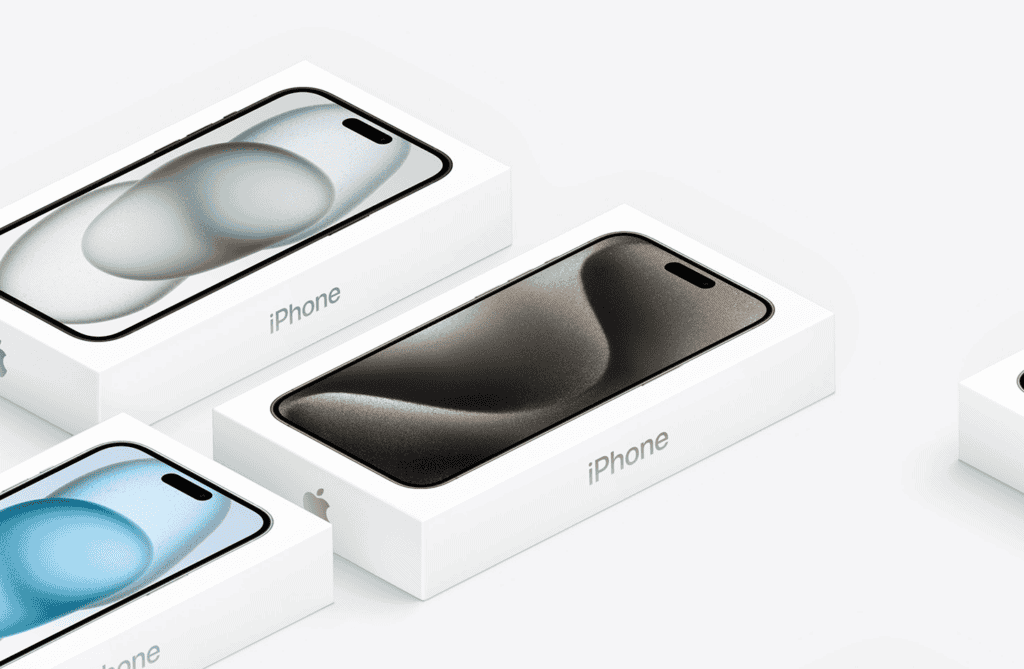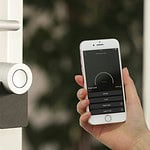Deciding whether to fix or upgrade an iPhone is a common question people ask, especially with the upcoming release of the iPhone 16. With regular use, iPhones may develop issues like a low battery or a cracked screen, and the cost to repair these issues can vary depending on the phone’s age. Getting your damaged phone fixed can restore its functionality at a reasonable cost, but with the new models offering advanced technology and features, upgrading might be worth considering.
As a user you have to weigh your options between repairing your current phone (and staying on your current carrier contract) or investing in a new one (and signing a new contract). This decision involves evaluating factors such as the condition and model of your current iPhone, your budget, and your desire for the latest features and improvements.
The 16 series will undoubtedly offer improved features and capabilities to any user – including a state of the art camera and increased storage space; and don’t forget about the new Ai features Apple is introducing this year.

Thinking about the good and bad points of fixing or upgrading an iPhone means you need to look at what you need and how long your phone will keep working. Make sure you think about how well your iPhone works now and what you will need in the future before you decide. If getting a repair can make your phone last longer and costs less than a new one, it might be the smarter choice, especially if you are happy with the features your phone already has.
Deciding Between Repair and Upgrade: The iPhone 16 Dilemma
The iPhone 16 is on the horizon, sparking the age-old debate: repair your current iPhone or take the plunge and upgrade? This decision depends on several factors, including your current iPhone model, its condition, your budget, and desired features.

Factors to Consider
- Current iPhone Model: If you have an older model, like an iPhone 12 or earlier, the performance and feature gap with the iPhone 16 will be significant. An upgrade might be more worthwhile in this case.
- Condition of Your iPhone: If your current iPhone is in good working order with minimal issues, a repair might be a cost-effective solution. However, if it’s facing major problems or frequent breakdowns, an upgrade could save you money in the long run.
- Budget: Repairs are generally less expensive than buying a new iPhone. However, if you’re considering upgrading anyway, the additional cost might be justifiable for the latest features and performance improvements.
- Desired Features: The iPhone 16 is expected to bring new features and enhancements. If these features are important to you, an upgrade might be tempting.
Comparing Repair and Upgrade Costs
To make an informed decision, let’s compare the estimated costs of repairing common issues versus upgrading to the iPhone 16.
| Issue | Estimated Repair Cost | iPhone 16 Upgrade Cost (Estimated) |
|---|---|---|
| Battery Replacement | $69 – $89 | $799+ (depending on model and storage) |
| Screen Replacement | $129 – $329 (depending on model) | $799+ (depending on model and storage) |
| Camera Repair | $100 – $400 (depending on model and severity) | $799+ (depending on model and storage) |
| Water Damage | $50 – $500+ (depending on severity) | $799+ (depending on model and storage) |
Please note that these are estimated costs, and actual prices may vary depending on your location and chosen repair provider. Additionally, the iPhone 16’s price is based on speculation and could change upon its official release.
Making the Decision
Ultimately, the decision to repair or upgrade rests with you. Weigh the factors mentioned above and consider your priorities. If your current iPhone is in decent condition and meets your needs, a repair might be the more practical choice. However, if you’re craving the latest features, improved performance, and a fresh start, upgrading to the iPhone 16 could be a worthwhile investment.
Key Takeaways
- Repairing an iPhone can be cost-effective for fixing specific issues.
- Newer iPhone models offer significant technological advancements.
- The decision between repair and upgrade depends on personal needs and device lifespan.
Evaluating the Need to Repair or Upgrade
When your iPhone is not working as it once did, you face a decision. Should you repair it or upgrade to a newer model? This section will guide you through assessing your current phone’s performance and considering your repair options.
Assessing Current iPhone Performance
Check your iPhone’s battery health. If the maximum capacity is below 80%, it may be time for a battery replacement. For models such as the iPhone 11 or iPhone 12, a simple battery swap can make a significant difference. Battery life is crucial as it determines how long your phone can run before needing a recharge. iOS provides information on battery health within the settings to help you decide.
Another key point is your iPhone’s storage space. If you frequently receive warnings about insufficient storage, managing your data or getting a phone with more capacity might be necessary. A full storage can hinder updates and performance.
Look at your phone’s ability to run the latest operating system, iOS. If software updates are no longer supported on your iPhone, you might miss out on new features and security patches. This is a strong indicator that an upgrade could be beneficial.
Lastly, consider the camera and display quality. Over time, tech improves, and newer iPhones like the iPhone 13 offer significant enhancements in these areas. If your current phone’s camera or display is damaged or outdated, an upgrade could improve your experience substantially.
Considering iPhone Repair Options
Screen damage is one of the most common issues iPhone users face. For a cracked display, iPhone screen repair services are available. AppleCare+ might cover the repair, or there are replacement service options for those without it. The cost can vary, so check the price against the value of your current phone. Replacement is sometimes more cost-effective for older models, like an iPhone 6S.
For other repairs like water damage or a cracked back glass, Apple’s out-of-pocket costs might influence your choice. If the repair price is high, compare it to the cost of a new or pre-owned iPhone in good condition.
Remember, safety is paramount. If the phone has a swollen battery or other safety issues, seek professional advice immediately. Choosing to repair or upgrade should always factor in the safety and reliability of your device.
Making the Decision to Upgrade
Deciding whether to upgrade your iPhone involves weighing the benefits against the cost. It’s important to assess how the new features will serve your needs.
Analyzing iPhone Upgrade Benefits
The benefits of upgrading an iPhone can be compelling. Here are specific advantages:
- Camera System: Newer models, like the iPhone 15 Pro, boast advanced cameras that vastly improve photo and video quality.
- Processor: Expect faster performance with the latest processor, which can enhance everything from gaming to general phone use.
- Battery Life: Upgrades often come with battery improvements, providing longer usage between charges.
- 5G Capability: Starting with the iPhone 12, 5G enables faster internet speeds and improved connectivity.
- RAM: More RAM means smoother multitasking and better handling of demanding apps.
- Capacity: New iPhones offer more storage options, allowing for more photos, videos, and apps.
- MagSafe: This is a feature for easy attachment of accessories and efficient wireless charging.
- Dynamic Island: A feature found on the iPhone 15, offering a richer user experience by integrating notifications and activities into a seamless display area.
Strategizing the Upgrade Timing
Choosing when to upgrade is nearly as important as deciding to upgrade:
- iPhone Launch: Apple typically unveils new iPhones in September. Timing your upgrade around this period can ensure access to the latest models.
- Preorder: To secure the newest iPhone as soon as possible, consider preordering right after the announcement.
- Deals and iPhone Upgrade Program: Companies often offer deals around the launch window. If you’re enrolled in the iPhone Upgrade Program, check your eligibility for a new iPhone without a significant upfront cost.
- Specs Comparison: Review the specs of the new iPhone against your current model. For example, the iPhone 13 Mini might offer enough enhancements over the iPhone 12 Pro Max to warrant an upgrade.
- Personal Needs: Consider if the new iPhone will offer significant improvements that match your personal use case.
Frequently Asked Questions
In this section, we provide clear insights into common issues iPhone users face when deciding whether to repair their existing device or upgrade to a new one.
Is it worth repairing an iPhone screen or should I opt for a new device?
Repairing the screen can be cost-effective if the rest of the phone works well. A new device may not be necessary if screen repair costs are reasonable.
What are the factors to consider when deciding between iPhone repair and purchasing a new one?
Consider the repair cost, the age of your iPhone, and any new features you might gain from upgrading. Weigh the benefits against the cost implications.
How does screen replacement impact the overall functionality of an iPhone?
A screen replacement can restore full functionality if done correctly. However, a non-professional repair could lead to further issues.
What are common misunderstandings that lead to replacing phones rather than repairing them?
People often assume a faulty iPhone needs replacement, but sometimes a simple repair can extend its life. Misunderstanding the repair’s potential leads to unnecessary upgrades.
At what point does replacing an iPhone battery become more economical than upgrading to a new model?
Consider replacing the battery if the phone is recent and the repair cost is less than a new phone. Battery replacement is worth it when performance is still sufficient.
How do the costs of repairing an iPhone compare to the expense of upgrading?
Repair costs often come in lower than the price of a new device. Assess if the problem is isolated or if there are multiple issues making an upgrade more sensible.







